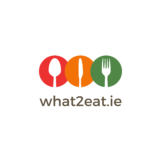July 16, 2024
Postpartum Wound Healing
Although childbirth is a miraculous and joyous event, it is also a physically
demanding process that can leave a woman’s body in need of significant
healing. Postpartum wound healing is an essential part of the recovery process,
whether from a vaginal birth or caesarean section optimising strength and well-
being is vital.
Stages of wound healing
Inflammatory Phase:
Immediately after delivery, the body initiates the inflammatory phase. This
stage is the body’s natural response to injury, it is displayed by redness,
swelling, and heat around the wound site. Typically, this phase lasts for
numerous days.
Proliferative Phase:
This stage is where the body begins to rebuild the damaged tissue. New tissue
forms, and the wound begins to close. Collagen, a protein essential for wound
healing, is produced in large amounts. This phase can last longer, generally
several weeks.
Remodelling Phase:
The final stage is the remodelling phase, newly formed tissue is gradually
dispersed and strengthened. This can last several months whilst the wound
continues to heal.
Tips for promoting healing:
1. Optimal Nutrition and hydration:
A balanced diet rich in vitamins and minerals alongside hydration will
ultimately promote wound healing . Particularly, vitamin C and zinc can
support tissue repair and boost immune system.
2. Rest:
Adequate rest is important for the body to recover properly. Although it
may be challenging as a new mother to get undisrupted sleep, aim to get
as much as possible.
3. Follow medical advice:
Adhere to medical advice given by your GP and other healthcare
professionals. They will instruct you on how to maintain proper hygiene
and prevent infection.
4. Avoid rigorous exercise or movements:
Avoid heavy lifting or strenuous activities that may affect the wound site.
Partaking in gentle exercises such as walking will promote circulation
and well-being.
Remember...
Your body has gone through a significant experience. Every
woman’s healing process is unique and it’s important to listen to your body, be
patient and seek medical advice when necessary. Celebrate each step towards
recovery and soak up every moment with your new baby!
Written by Cliodhna Dunleav, Final Year Dietitian Student, Reviewed by Sonja Lynch CORU Registered Dietitian
References
Almadani, Y. H., Vorstenbosch, J., Davison, P., & Murphy, A. (2021). Wound Healing: A
Comprehensive Review. Seminars in Plastic Surgery, 35(3). https://doi.org/10.1055/s-0041
1731791
Kolimi, P., Narala, S., Nyavanandi, D., Youssef, A. A. A., & Dudhipala, N. (2022)
Innovative Treatment Strategies to Accelerate Wound Healing: Trajectory and Recent
Advancements. Cells, 11(15), 2439. https://doi.org/10.3390/cells11152439
Landén, N. X., Li, D., & Ståhle, M. (2016). Transition from inflammation to proliferation:
A critical step during wound healing. Cellular and Molecular Life Sciences, 73(20), 386
3885. https://doi.org/10.1007/s00018-016-2268-0
Supporting wound healing after giving birth
Postpartum Wound HealingAlthough childbirth is a miraculous and joyous event, it is also a physicallydemanding process that can leave a woman’s body in need of significanthealing. Postpartum wound healing is an essential part of the recovery process,whether from a vaginal birth or caesarean section optimising strength and well-being is vital.Stages of wound healingInflammatory Phase:Immediately after
Post Partum Nutrition
Nurturing Mother & Baby Embracing a tiny new human is like embarking on a wild rollercoaster of cuddles, chaos, and cute babygro’s! The post-baby phase, aka the “fourth trimester,” is a whirlwind of changes, turning your world inside out. As a Dietitian and mother of three myself I’ve witnessed the importance of post-baby nutrition first-hand.


